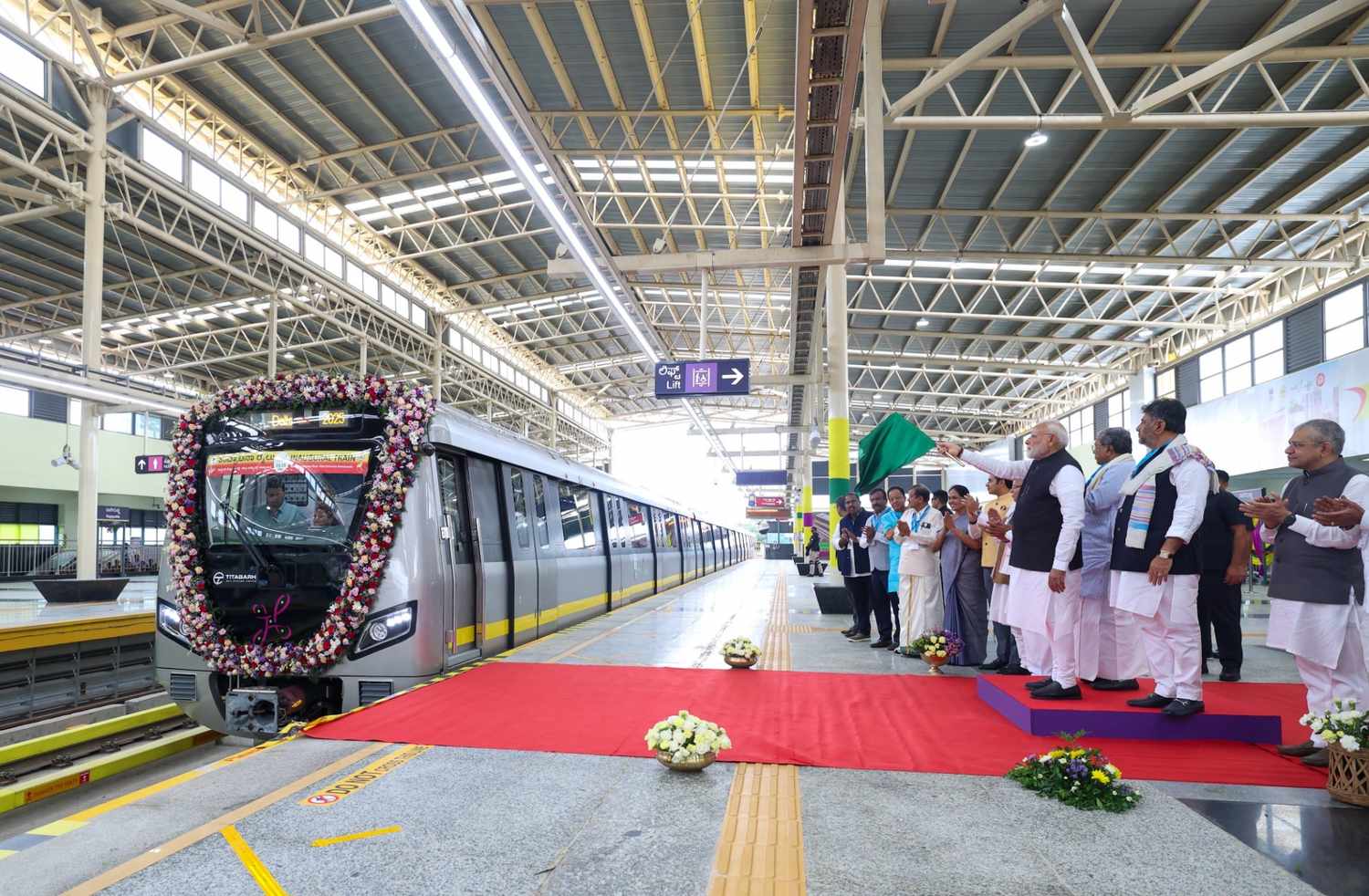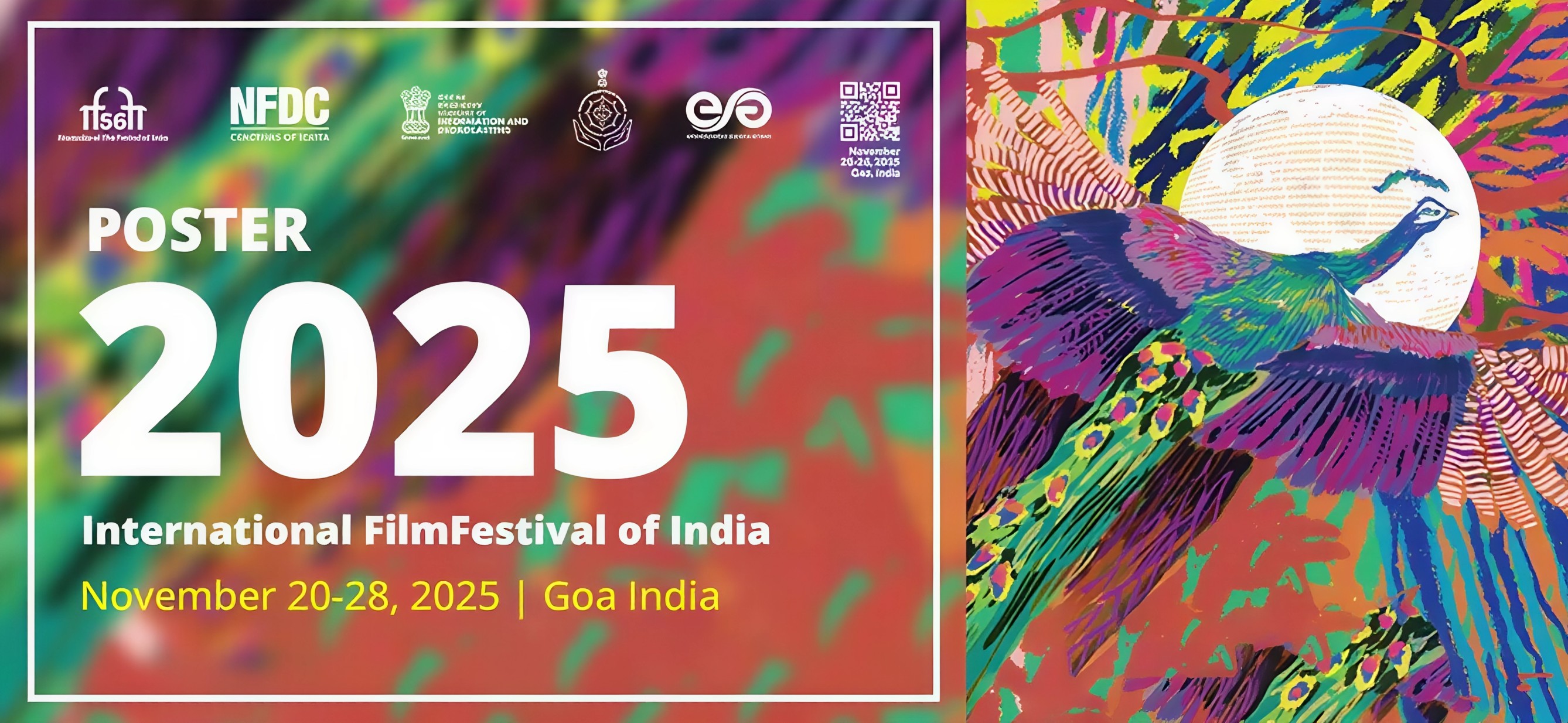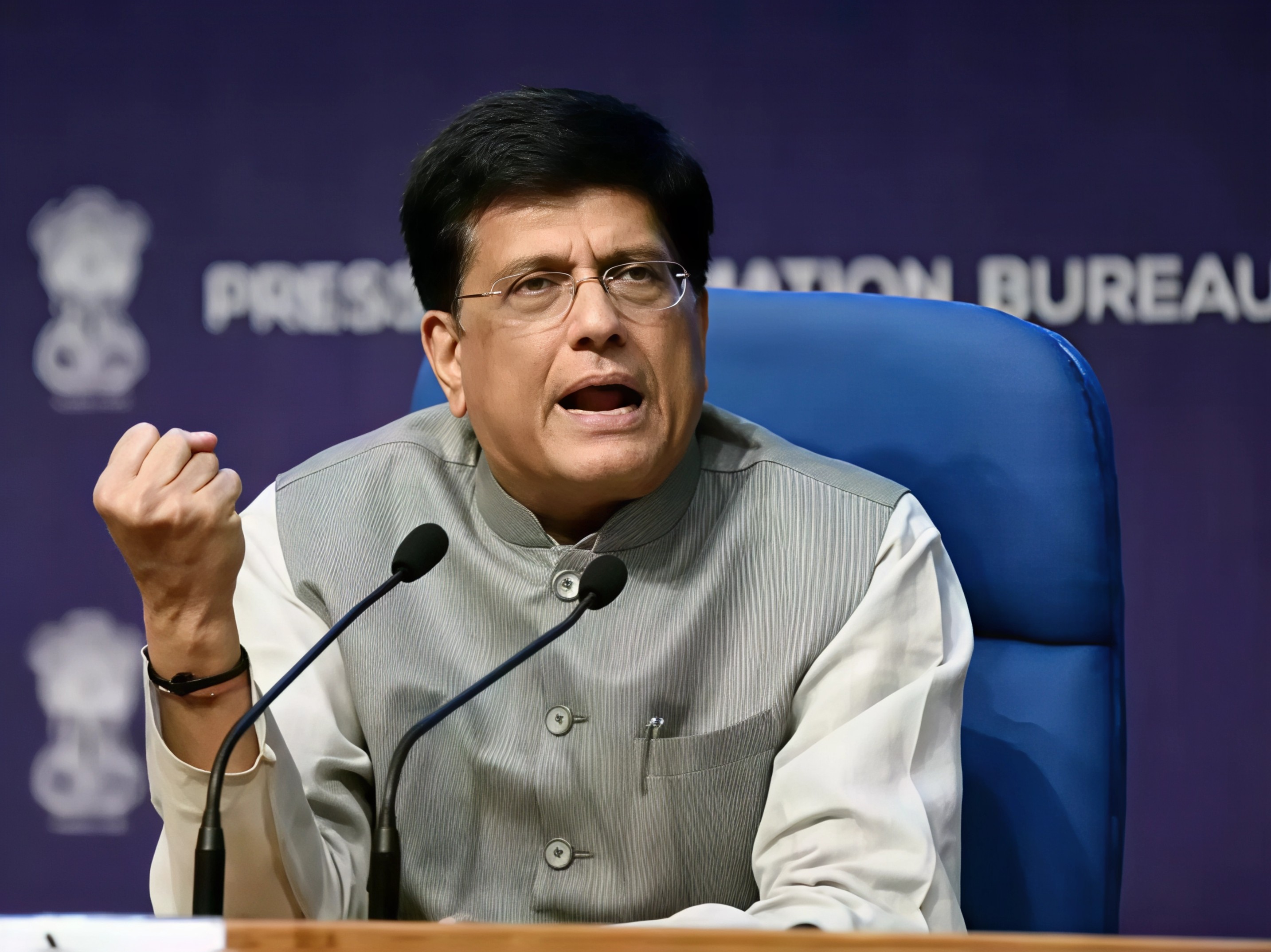Bengaluru’s transport network got a historic upgrade as Prime Minister Narendra Modi inaugurated the long-awaited Yellow Line Metro and launched the Bengaluru–Belagavi Vande Bharat Express. The dual inauguration marks a milestone in the city’s journey toward better connectivity, easing traffic congestion, and improving last-mile travel for lakhs of commuters.
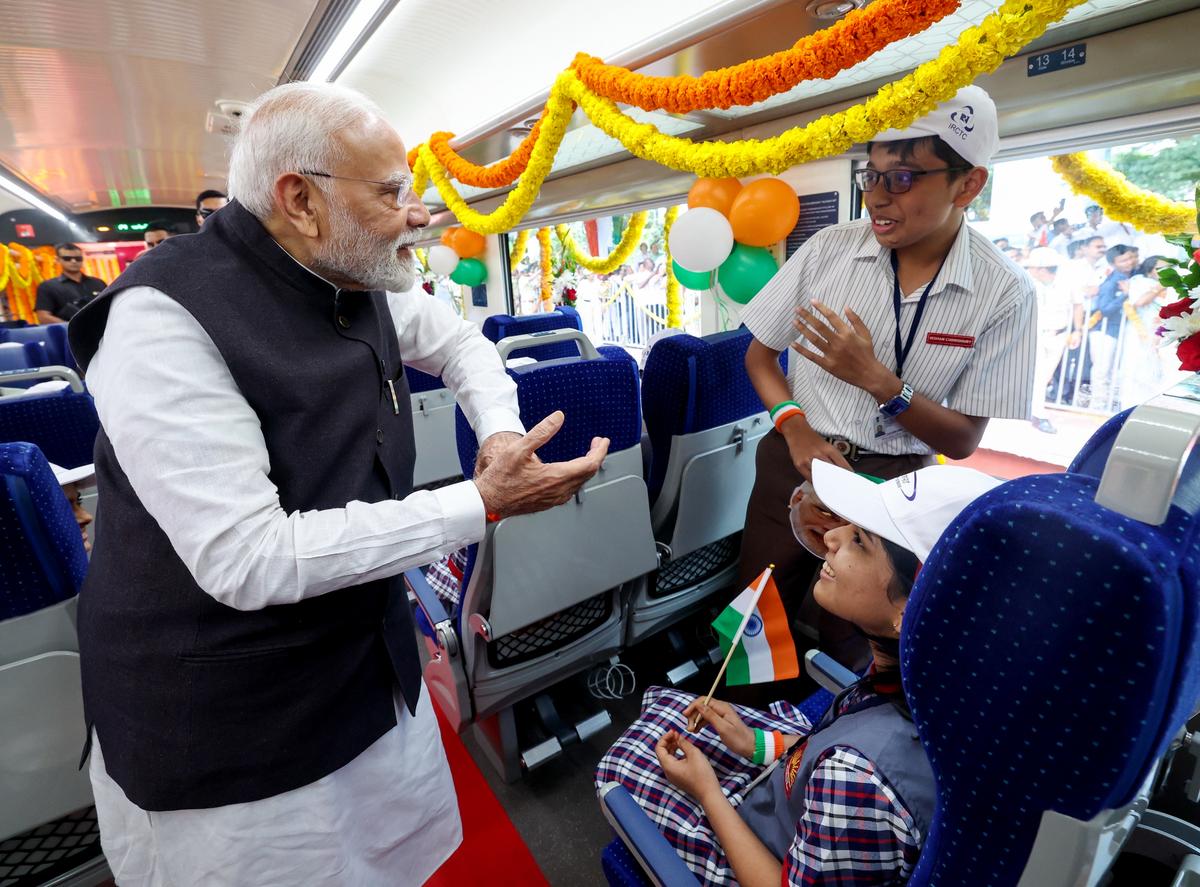
The Yellow Line Metro is being hailed as a game-changer for southern Bengaluru. Stretching over 19 kilometres from RV Road to Bommasandra, it covers 16 stations and connects major residential hubs, technology parks, and manufacturing zones. With key stops at Silk Board Junction, BTM Layout, Electronic City, and Bommasandra Industrial Area, it will serve as a lifeline for daily commuters, particularly those working in leading IT and industrial firms such as Infosys, Biocon, and TCS. The route is expected to serve nearly eight lakh passengers every day, significantly easing traffic at bottlenecks like the notorious Silk Board Junction.
Built at an estimated cost of over five thousand crore rupees, the Yellow Line was originally set to open on August 15 but was launched five days earlier in line with the Prime Minister’s visit. Services begin on August 11 with trains running every 25 minutes in the initial phase.
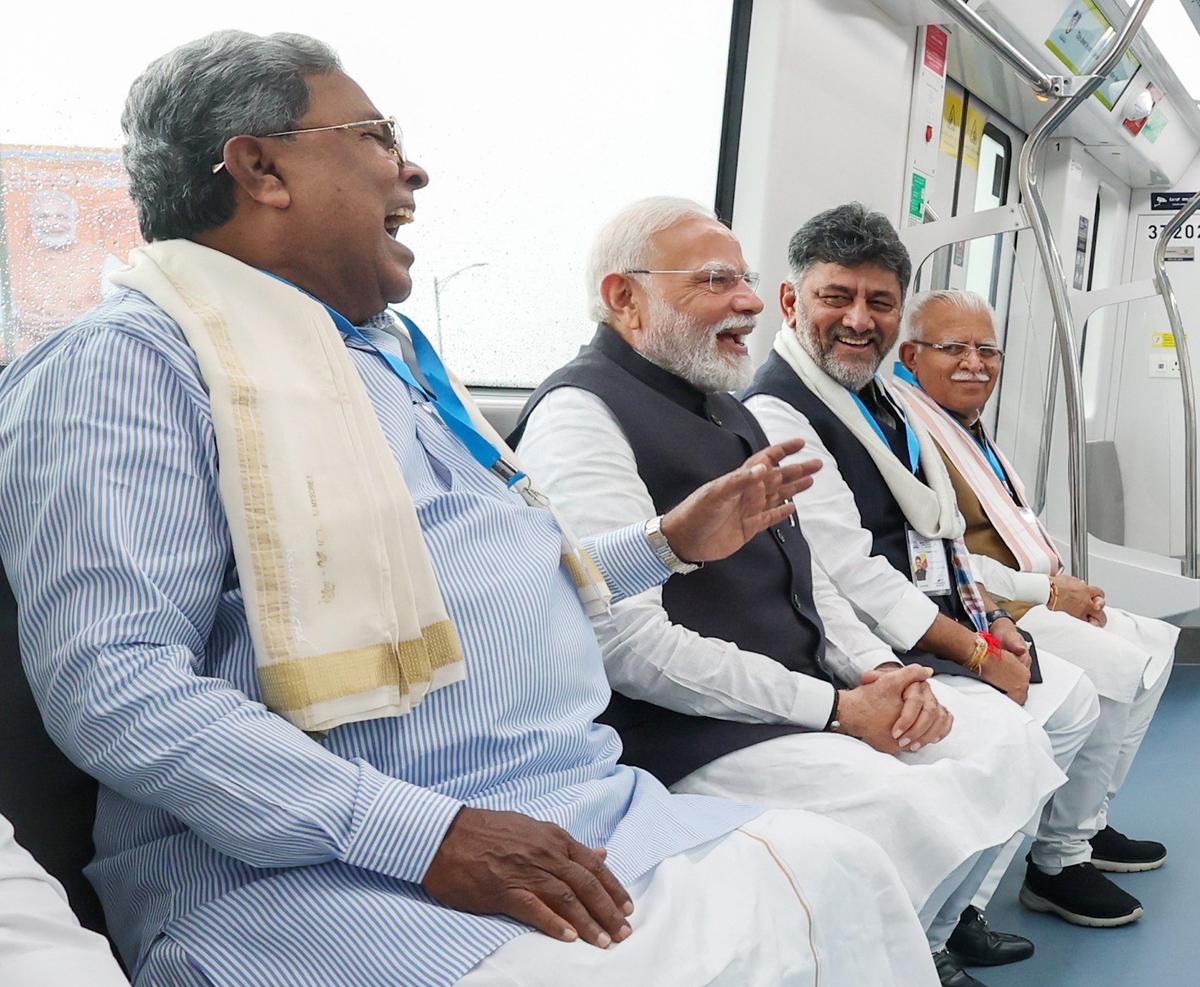
Alongside the inauguration, the foundation stone for Namma Metro Phase 3 was also laid. This 44.65 kilometre expansion, with a budget of over fifteen thousand crore rupees, aims to benefit more than 25 lakh residents in southern Bengaluru and promises to further enhance the city’s connectivity.
Security was tight across event venues with traffic diversions in place to manage the movement of vehicles. Following the launch, Prime Minister Modi addressed the public, highlighting the importance of the new infrastructure in driving economic growth and improving the quality of life for residents.
The addition of the Bengaluru–Belagavi Vande Bharat Express brings faster and more comfortable intercity travel, further positioning Bengaluru as a key hub for business and tourism. With both the metro expansion and the new high-speed train, the city is taking bold strides toward easing its infamous traffic congestion while creating a more efficient and sustainable urban transport system.
For more updates on India’s biggest travel and transport developments, follow Travel Moves on Instagram and Facebook.

